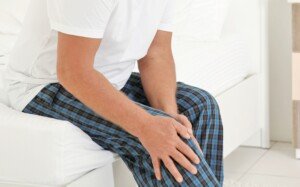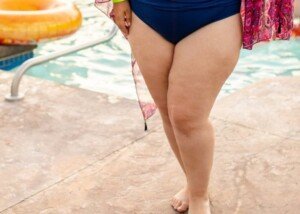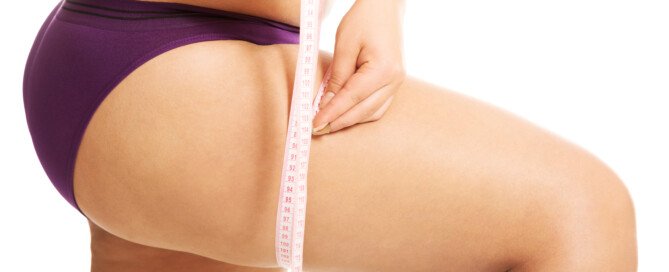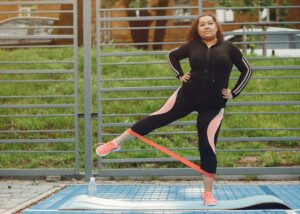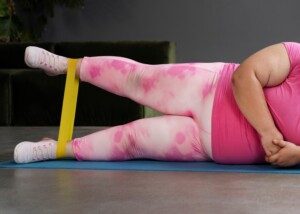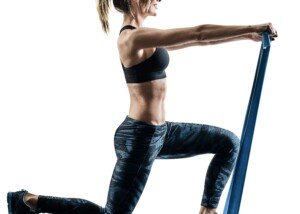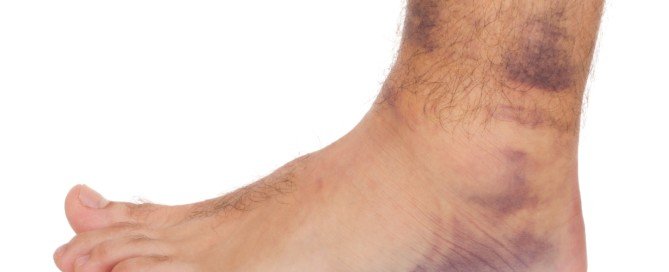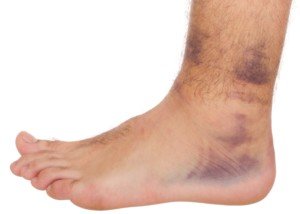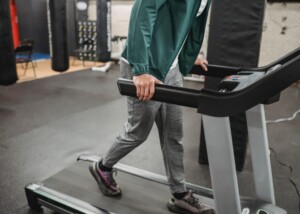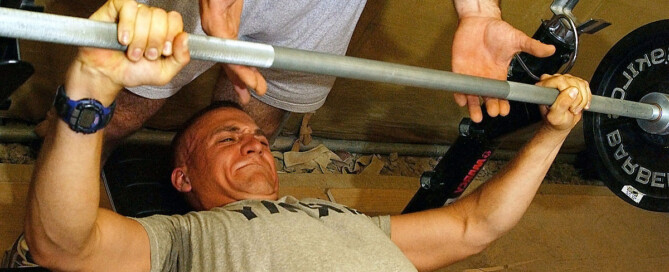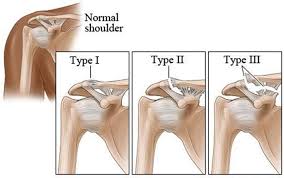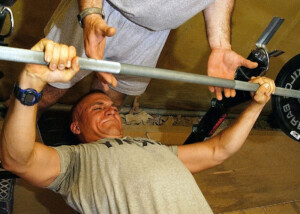Cause of Hurting Knees Overnight
Do your knees feel fine when you go to bed but then in the middle of the night you awaken in pain?
How could sleeping soundly lead to knee pain?
Did you overlook a recent trauma to the knee?
“The sudden onset of knee pain could represent an acute injury [e.g., meniscus tear from a slip-and-fall] that was possibly unrecognized, such as a mild miss-step or twist that may have led to swelling and pain,” says John-Paul H. Rue, MD, orthopedic sports medicine surgeon with Orthopedics and Joint Replacement at Mercy Medical Center in Baltimore, MD.
But what if the overnight pain is in both knees or there hasn’t been any trauma?
“Knee pain can also develop suddenly if you recently started a new activity or increased your activity, such as walking a long distance or doing a new activity,” says Dr. Rue.
“An acute infection in the joint, known as septic knee, could be another cause of sudden new-onset knee pain without trauma.
“Warning signs would be swelling, pain, and increased warmth in the knee, and it is typically associated with a fever and generally not feeling well.”
A patellar tracking problem (more common in women) can also trigger pain in the knee that develops overnight, such that if you awaken in the middle of the night when nature calls, you realize “Geez, my knee!”
A tracking issue with the patella (kneecap) is usually caused by sport, and this can really hurt, though avoidance of the offending activity (which is usually running or jumping) should clear up this problem.
If your knee pain subsides once you’re up and about in the morning, it’s probably nothing to worry about.
But if the discomfort begins to occur during waking hours, you may have bursitis, osteoarthritis or chondromalacia patella (wearing down of the cartilage beneath the kneecap).
In fact, a certain kind of bursitis can cause overnight knee pain.
You may also want to experiment with different leg positions when sleeping.
Perhaps the knee is simply reacting to a less-than-ideal position overnight and gets stiff as a result.
 Dr. Rue specializes in prevention and treatment of sports and exercise injuries. His primary focuses are knee, shoulder and elbow injuries including ACL and cartilage injuries, rotator cuff injuries and overuse tendonitis.
Dr. Rue specializes in prevention and treatment of sports and exercise injuries. His primary focuses are knee, shoulder and elbow injuries including ACL and cartilage injuries, rotator cuff injuries and overuse tendonitis.
 Lorra Garrick has been covering medical, fitness and cybersecurity topics for many years, having written thousands of articles for print magazines and websites, including as a ghostwriter. She’s also a former ACE-certified personal trainer.
Lorra Garrick has been covering medical, fitness and cybersecurity topics for many years, having written thousands of articles for print magazines and websites, including as a ghostwriter. She’s also a former ACE-certified personal trainer.
.
Top image: Shutterstock/Africa Studio
If Plus Size Women Lift Heavy Will this Make Fat Cells Bigger?

Are you overweight and want to lose body fat?
Then lift heavy. Don’t make the mistake of thinking heavy weightlifting will bulk up your body. (more…)
Will Elastic Band Walking Shrink Thick Thighs?

Have you been walking sideways with a tight elastic band wrapped around your lower legs to trim your thick thighs?
Give it up; this won’t shrink your thighs. (more…)
Signs Your Ankle Is Broken vs. Badly Sprained
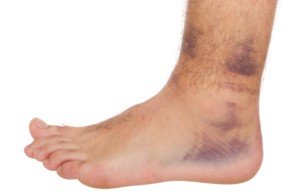
Okay, so you just sprained your ankle and it’s as big as a pumpkin, turning ugly colors.
Can this STILL be only a sprain or might it be broken?
Should you sit home and ice the thing all day long and keep it propped up, keeping your fingers crossed that no bones are broken?
If this is how you feel, why not just go to the emergency room? No insurance?
Don’t let that stop you.
The last thing you want, especially if you’re an athlete, is a permanently bum ankle because it wasn’t treated in a timely fashion.
Signs Your Ankle Is Broken vs. Badly Sprained
“The bottom line is that the only way to truly tell whether your ankle is broken (if there is a fractured bone) vs. just badly sprained is to get an X-ray,” says John-Paul H. Rue, MD, orthopedic sports medicine surgeon with Orthopedics and Joint Replacement at Mercy Medical Center in Baltimore, MD.
“There are certain rules that providers use, called the Ottawa Rules, which basically mean that if you have tenderness over the bones around the ankle and cannot bear weight, you need an X-ray.
“Any type of crepitus, or crunching type of feeling at the bones, or deformity of the ankle requires an X-ray, as those are strongly suggestive of fracture.”
A badly swollen ankle isn’t necessarily broken, but a broken ankle will always be badly swollen.
Fearing a Fracture
People are afraid to hear, “It’s broken.” But what most people don’t know is that the break in an ankle takes a shorter time to heal than do badly sprained ligaments.
This is true even though the break may require a plaster cast.
A really bad sprain in the absence of a break can take several months to fully heal.
Do not delay in seeking medical attention.
There is no such thing as a “wait and see” approach if a bone is broken.
 Dr. Rue specializes in prevention and treatment of sports and exercise injuries. His primary focuses are knee, shoulder and elbow injuries including ACL and cartilage injuries, rotator cuff injuries and overuse tendonitis.
Dr. Rue specializes in prevention and treatment of sports and exercise injuries. His primary focuses are knee, shoulder and elbow injuries including ACL and cartilage injuries, rotator cuff injuries and overuse tendonitis.
 Lorra Garrick has been covering medical, fitness and cybersecurity topics for many years, having written thousands of articles for print magazines and websites, including as a ghostwriter. She’s also a former ACE-certified personal trainer.
Lorra Garrick has been covering medical, fitness and cybersecurity topics for many years, having written thousands of articles for print magazines and websites, including as a ghostwriter. She’s also a former ACE-certified personal trainer.
.
Top image: Shutterstock/Luis Santos
How to Tell Your Knee Injury Is Bad
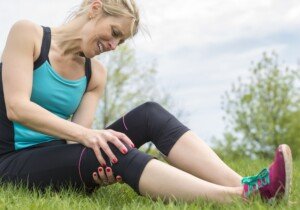
Did you know that being able to stand on the knee or even return to the game doesn’t exclude a serious knee injury?
So how can you tell if your knee injury is bad?
The knee is the most unstable joint in the body. Think of all it must do, especially in sport.
Have you ever said, or known anyone to say, “Oh, my knee can’t be injured that bad; it’s not even swollen,” or, “My knee will be fine; I was able to jump right back into the game”?
But is there a way for a layperson to tell if their knee injury is truly bad or just an annoyance?
“Inability to bear weight is a bad sign,” begins John-Paul H. Rue, MD, orthopedic sports medicine surgeon with Orthopedics and Joint Replacement at Mercy Medical Center in Baltimore, MD.
History of Knee Activity
Dr. Rue continues, “If someone tells me they made a cutting or pivoting move, felt a pop in their knee, and couldn’t stand on it after that…that generally means they have had a significant injury, likely a tear of the anterior cruciate ligament.”
That’s a no-brainer: not being able to bear weight or stand on the knee, especially if this experience persists.
What can’t rule out a bad injury?
“But just because someone is able to stand on their leg, or even return to the game doesn’t by itself exclude a significant injury,” says Dr. Rue.
“In general, if you have significant swelling in the knee, or pain with weight-bearing, there is a high chance that you have sustained a significant knee injury.”
You cannot work through or tough out a bad knee injury. And if the anterior cruciate ligament isn’t involved, the situation may involve another ligament or the cartilage (meniscus).
What if your doctor doesn’t think much is wrong and even says you don’t need an MRI? Yet intuitively, you just “know” something is wrong?
Seek a second opinion. This is what my mother did and it turned out she had a meniscus tear and required surgery.
An ACL tear, by the way, may take up to 10 months to fully heal.
But you can’t make a serious knee injury go away by ignoring it.
 Dr. Rue specializes in prevention and treatment of sports and exercise injuries. His primary focuses are knee, shoulder and elbow injuries including ACL and cartilage injuries, rotator cuff injuries and overuse tendonitis.
Dr. Rue specializes in prevention and treatment of sports and exercise injuries. His primary focuses are knee, shoulder and elbow injuries including ACL and cartilage injuries, rotator cuff injuries and overuse tendonitis.
 Lorra Garrick has been covering medical, fitness and cybersecurity topics for many years, having written thousands of articles for print magazines and websites, including as a ghostwriter. She’s also a former ACE-certified personal trainer.
Lorra Garrick has been covering medical, fitness and cybersecurity topics for many years, having written thousands of articles for print magazines and websites, including as a ghostwriter. She’s also a former ACE-certified personal trainer.
.
Top image: Shutterstock/Lopolo
Cause of Elbow Pain When Carrying Things
If you suffer elbow pain when carrying things, especially in just one elbow, there is a likely specific cause of this.
“Elbow pain from carrying things is often due to lateral epicondylitis, otherwise known as tennis elbow,” says John-Paul H. Rue, MD, orthopedic sports medicine surgeon with Orthopedics and Joint Replacement at Mercy Medical Center in Baltimore, MD.
“The pain results from overuse and micro-tears of the tendons of the forearm muscles at their insertions on the bone at the elbow.”
What about Golfer’s elbow?
“Yes, golfer’s elbow can definitely cause pain when carrying things, especially if that involves forceful gripping,” says Dr. Rue.
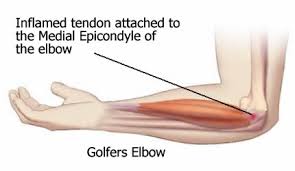
“Tennis elbow is about five times more common than golfer’s elbow, so from a percentage standpoint, most elbow pain from lifting is due to tennis elbow.”
Golfer’s elbow is known as medial epicondylitis. You need not be a tennis player or golfer to develop these conditions.
Lateral refers to on the outside, and medial refers to inner or on the inside.
I once had pain in the left elbow when I carried things—as long as my hand was gripping the object I was carrying.
I then discovered I could carry the heaviest items if my forearm were placed beneath the object, and my hand was not holding onto it — such as picking up a table with my left hand palm-up and not gripping underneath it, but forearm supporting the weight.
Or, I could carry any weight of shopping sacks — as long as the handle of the sack was looped around my forearm, sparing my hand from holding on (gripping).
So it wasn’t the bending of the elbow that was causing pain; it was the gripping action of my hand (innervating the medial epicondyle tendon), even if my arm was straight.
The medical epicondyle controls most of the hand finger grip! When you carry things, at least items of weight, often you are applying a grip.
This will aggravate the inflammation of the medial epicondyle.
What about the lateral epicondyle? As Dr. Rue says, this too can cause the discomfort, but not because you’re gripping anything.
In the case of the lateral situation, if the forearm is angled a certain way, there will be pain.
Solution to Elbow Pain When Carrying Things
You first need a diagnosis. A sports medicine doctor is the physician of choice for something like this.
Once you’re diagnosed, you will then likely be assigned to a physical therapy program.
It’s pretty hard to go through life avoiding carrying things, especially if the pain is brought on by items that don’t even weigh that much.
Tendons take a very long time to heal. Do not expect a cure after only a month of therapy, though noticeable relief may occur after a fairly short time in cases where the discomfort is only mild.
Athletes will have higher standards for a complete resolution of symptoms.
Prevention of Elbow Pain

To prevent your elbows from hurting when you do the necessary carrying and lifting of day-to-day activities, you should do the following exercises:
Hand grips—these little devices are sold in the sports departments of retailers and online. Use these tools while watching TV or while waiting at traffic stops.
Chest press motions. These can be done with dumbbells, a barbell, equipment or tension bands. You can also build up strength via pushups.
Avoidance of repetitive stress to the forearms, though this will be difficult if you’re a tennis player.
Icing and rest are not enough, especially if your lifestyle calls for frequent carrying of things.
Do not assume elbow pain will go away on its own. Discomfort in a joint is not the same as a strained muscle that goes away after only a few days’ rest.
 Dr. Rue specializes in prevention and treatment of sports and exercise injuries. His primary focuses are knee, shoulder and elbow injuries including ACL and cartilage injuries, rotator cuff injuries and overuse tendonitis.
Dr. Rue specializes in prevention and treatment of sports and exercise injuries. His primary focuses are knee, shoulder and elbow injuries including ACL and cartilage injuries, rotator cuff injuries and overuse tendonitis.
 Lorra Garrick is a former personal trainer certified through the American Council on Exercise. At Bally Total Fitness she trained women and men of all ages for fat loss, muscle building, fitness and improved health.
Lorra Garrick is a former personal trainer certified through the American Council on Exercise. At Bally Total Fitness she trained women and men of all ages for fat loss, muscle building, fitness and improved health.
.
Top image: Shutterstock/Shaynepplstockphoto
Can Holding onto the Treadmill Hurt Your Shoulders?
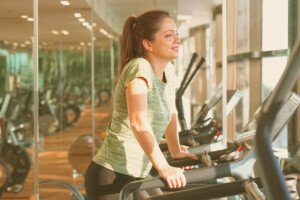
Do you do the “shoulder bob” while you hold onto the treadmill when walking?
Have you noticed a mysterious shoulder pain recently that seems to have no cause? (more…)
Can Bench Pressing Cause AC Joint Separation?
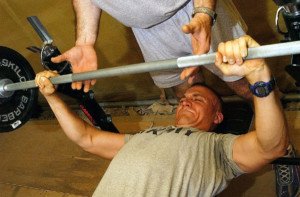
A grade 2 AC joint separation is a kind of injury that some weightlifters think can be caused by the bench press.
Do not equate an “injured” AC joint with an actual separation. (more…)
Can an X-ray Miss a Grade 1 AC injury?

Since X-rays look at bones, is it possible that an X-ray can miss a grade 1 AC injury? (more…)
Best Exercises to Heal Golfer’s Elbow



